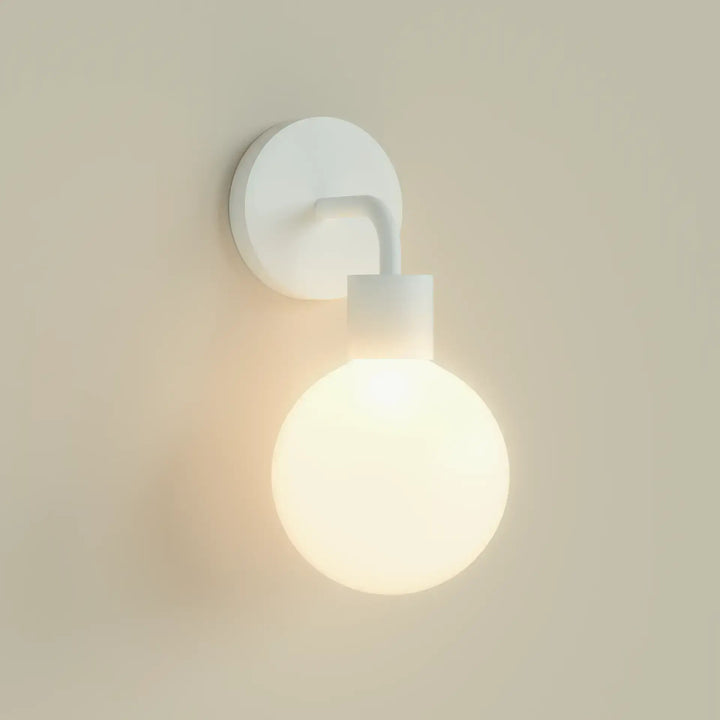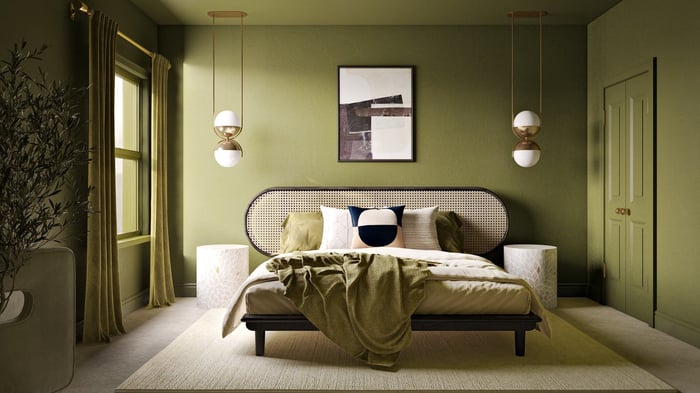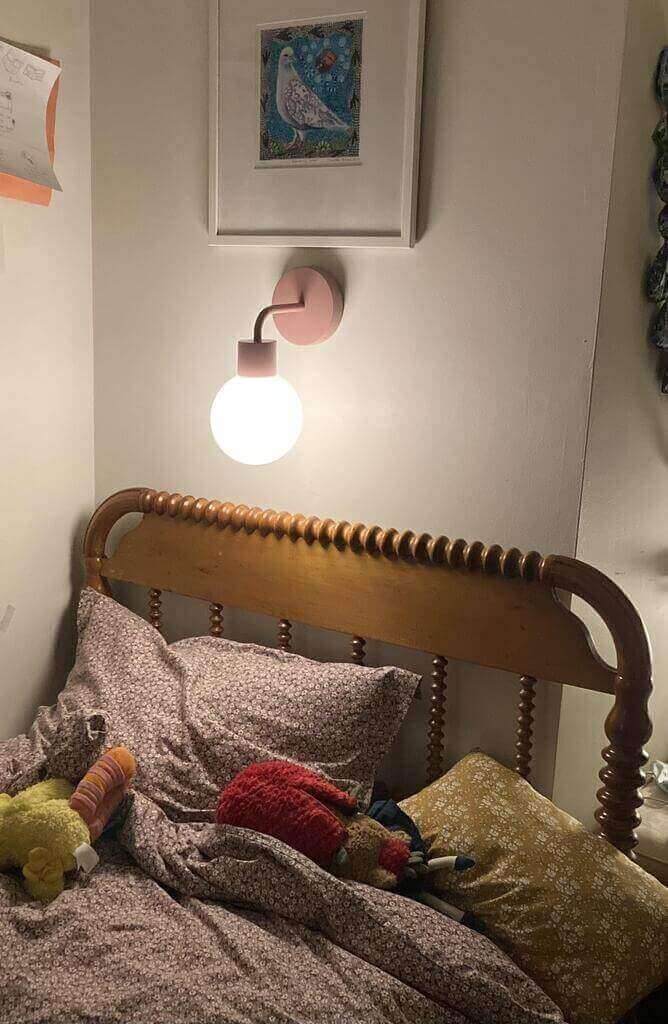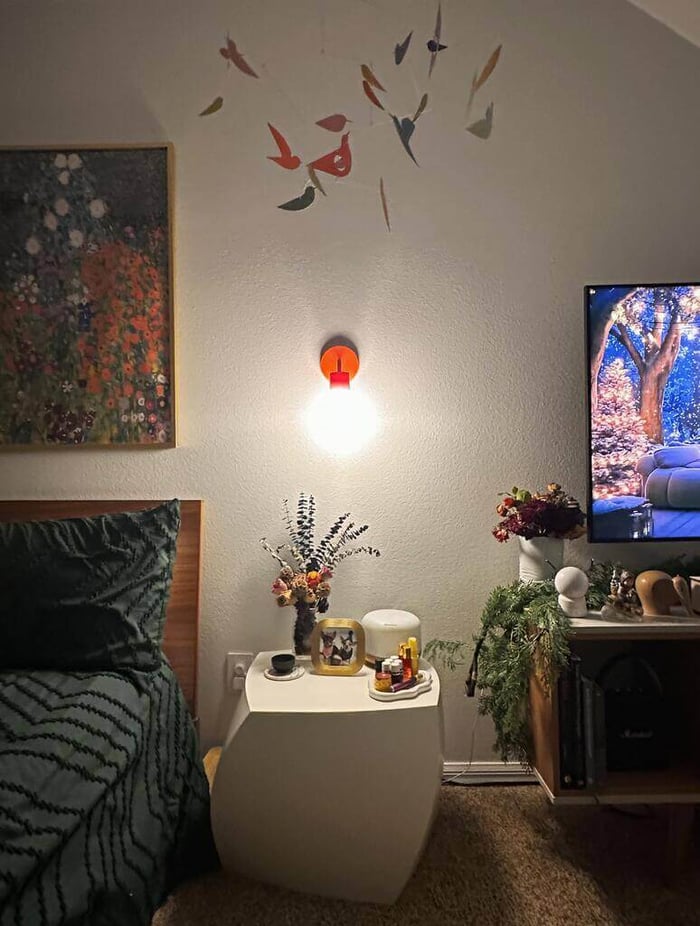Table of Contents
Color temperature plays a major role in the look and feel of any room. Just picture how warm and inviting a candlelit dinner in your dining area feels versus the stark tone set by harsh, buzzing fluorescent lighting in a windowless office space. In between those extreme examples, though, are the color temperatures we tend to use most frequently in our homes. They range from ambient warm temperatures to cooler tones for task lighting.
Ahead, we’re diving into the importance of color temperature, including an explanation of Kelvin ranges and how to determine which rooms should be cast with cool lights and which ones should bask in a warmer glow.
First, how is light temperature measured?
You’ve probably noticed the K on your package of lightbulbs before. The Kelvin temperature scale is what’s used to measure color temperature. Lower values indicate warmer, amber-to-yellow light while the higher numbers signal cooler-toned, bluer lights.
Light temperature | Kelvin range |
|---|---|
| Warm light | Approximately 2000 to 3000K |
| Cool-to-bright white light | Approximately 3100 to 4500K |
| Bright daylight | Approximately 4600 to 5500K |
Here’s how to break down light temperatures:
Warm light
Approximately 2000 to 3000K
Lights in this range set a cozy and inviting mood. They’re great for spots like living rooms, dining nooks, and bedrooms where you want to unwind and relax, and this color temp range works nicely in table lamps, pendants, and chandeliers. Lights in the 2000 to 2500K range will have a warm glow whereas those between 2500 and 3000K will appear more as a soft white. By comparison, the glow of a candlelight is about 1700 to 2000K.
Cool-to-bright white light
Approximately 3100 to 4500K
Next on the color temperature spectrum are lights that range from soft white (3100) to cool white (4500) with neutral and bright white light in between. Cooler lights tend to work best in areas like kitchens and workspaces where you need to focus.
Bright daylight
Approximately 4600 to 5500K
Lights in this range are great for task lighting. Typically lights with this cool of a temperature and this brightness are found in areas like hospitals or commercial spaces.
What color temperature should you choose for your rooms?
Both lighting and color temperature play pivotal roles in creating ambiance in a space.
In spaces where you gather and entertain, like your kitchen, dining area, or living room, warmer light works best. Warm light also works well in a bedroom. Meanwhile, your kitchen workspace and your home office can benefit from the cool or bright white lights.
But because many of our living spaces serve dual purposes, it’s helpful to be able to switch up the lighting temperature. For example, some might prefer neutral white (3500 to 4100k) for their bathrooms for grooming tasks and applying makeup. Meanwhile, light between 2700 to 3200K creates more of a spa-like vibe. Or, you might need a bright white light in the kitchen while chopping veggies and preparing a meal, but may want a warmer light when it comes to unwinding and enjoying dinner.
Wall sconces with customizable light temperatures
To help achieve the perfect ambiance, Poplights have customizable light settings easily controlled by an app. The renter-friendly wall sconces have dimmable settings and three color temperatures (warm, neutral, and cool) to help set the mood for any occasion. You can change up the temp depending on what you’re using the room for — or the time of day. That means you can light up a room with a cool light when you need to get things done and then unwind with the warm setting.
White Poplight

$99.00
Rechargeable, stick on wall lighting ⏱ Instant Installation: Stick on in seconds—no tools needed! Transform any space with Poplight's effortless setup. 👉 Customizable Lighting: Enjoy perfect ambiance with dimmable settings and three color temperatures to match any mood or occasion. Simply… read more
How does color temperature affect a room?
In addition to setting a vibe in a space, color temperature can affect the look of a room.
For example, paint colors, rugs, curtains and wall art can look different in warm light versus cool light. Warm lights can give off a warm glow that can range from amber if it's lower on the Kelvin scale to a soft yellow. Meanwhile, cooler lights appear whiter or may even have blue tint in them and can brighten a room.
To sum it all up: When it comes to determining what type of light temperature you should have in specific rooms, it helps to think about the tone you want to set as well as the purpose of your room.



.jpg)


